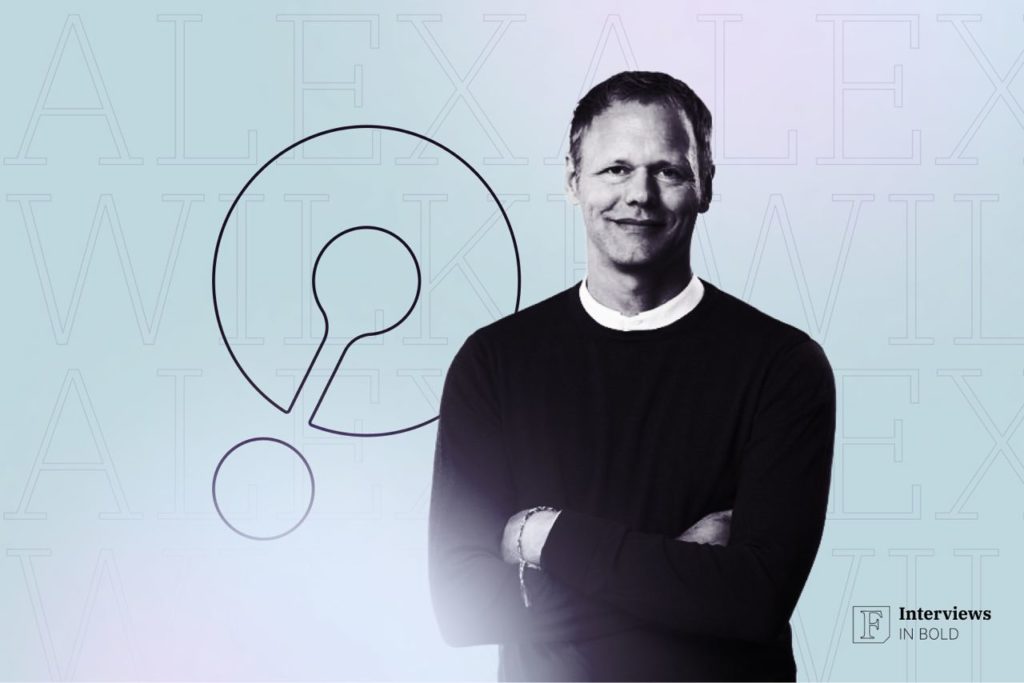In an exclusive interview with Finbold, Alexander Wilke, the co-founder of Pendulum, a public blockchain connecting traditional finance with decentralized finance (DeFi), has maintained that influential global organizations such as the World Economic Forum (WEF) cannot hamper the growth of the crypto sector. Wilke highlighted how the crypto industry, through use cases such as DeFi, is on course to disrupt the financial landscape.
On the other hand, with Bitcoin (BTC) prices attempting to rally after significant 2022 losses, the co-founder explained how the maiden cryptocurrency’s price is correlated to macroeconomic factors such as inflation and central bank interest rates. Indeed, he also talked about the short and long-term impact of events such as bankruptcies in the crypto space.
Furthermore, Wilke delved into the progress of the Pendulum roadmap and the main challenges encountered in designing and developing building a decentralized and secure blockchain infrastructure. Lastly, he shared Pendulum’s plans to ensure there is seamless integration with banking networks in 2023 and beyond.
1. Pendulum is a public blockchain connecting traditional finance with DeFi. For a start, can you give our readers an example of a key real-life use case of your technology?
“Pendulum’s initial key use case is servicing businesses in making instantaneous cross-border payments, including foreign currency exchange (fx).
For example, we have talked to a business in Mexico, that is importing goods from Brazil on a regular basis. They usually pay their provider via a classic bank transfer which costs them several 2-3% in fees and would take about 1-2 weeks. One day, the money did not arrive for 2 weeks and they needed to call up their bank with a very high manual effort to finally find out, that the money got stuck with a US bank and it took additional time to unlock it. This lack of transparency is the main problem for those businesses.
In this line, the developments of decentralized automated market makers (AMMs), together with the constantly growing adoption of fully collateralized fiat stablecoins, can solve the main pain points of cross-border payments, reducing costs to below 0.1%, speed up transaction time to a couple of seconds, as well as reducing counterparty and settlement risks.”
2. What’s the main reason behind your decision to choose the path towards the convergence of forex and DeFi?
“The costs on-chain are much lower because novel-design AMMs can allocate fiat liquidity and are more capital-efficient, resulting in lower slippage and fees for the fx compared to traditional infrastructure. Due to stablecoin standards and the open architecture of DeFi applications, any user can contribute to the liquidity of various currencies, which allows much higher fiat liquidity aggregation.
The transaction finality on modern public proof-of-stake (PoS) blockchains usually takes a couple of seconds, and an exchange transaction is secured by the AMM smart contract that executes the transaction as a payment-versus-payment (PvP). This architecture protects the user’s funds and ensures that the sending of tokens will only be allowed and executed.
When the other currency of the trading pair is received settlement and counterparty risks are solved by a smart contract that can only execute public, auditable software code running on public infrastructure. Next to these direct advantages for the user, on-chain fx implements a level of transparency that has not been seen before. All reserves, all exchange rates, liquidity, and trades are visible and auditable while protecting user privacy. Everyone wins when we bring more fiat and stablecoin use cases on-chain.”
3. According to Pendulum’s roadmap, it is projected that Q1 of 2023 will be a solid period for the project as you plan to launch the mainnet. Is everything going as per the plan? What was the hardest and most challenging thing when launching Pendulum, and why?
“Pendulum’s blockchain development started in 2021, and the team’s experience in blockchain development dates back to 2016 when we were already interacting with stablecoins on the Stellar blockchain. I believe we have a very solid plan and product development in place for achieving our goals in Q1 2023 and for 2023 overall.
One of the main challenges is building a decentralized and secure blockchain infrastructure from scratch and distributing it. With the shared security and decentralization we inherit as a Polkadot parachain, Pendulum is starting at a very high level, even better than some of the top layer-1 blockchain projects. Additionally, we, fortunately, have a very active community helping us to run nodes and collators.
A second challenge is our bridge from Stellar to Pendulum, where we bring high-quality fiat stablecoins into the Polkadot ecosystem. Bridges are always a security challenge, and we had to choose wisely how we deal with the bridge-security. With Spacewalk, we found a solution that comes with a decentralized vault architecture for securing the bridged assets. This decentralized concept is much more resistant to attackers and has just passed an external audit.”
4. When it comes to the myriad regulatory issues that DeFi platforms have to contend with, could you perhaps elaborate on Pendulum’s approach to compliance and regulation?
“Pendulum serves as an infrastructure working with partners for stablecoins that are compliant in their region. It will try to stay away from experimental algorithmic stablecoins and rather include widely adopted stablecoins or CBDCs. We follow the regulatory landscape pretty closely and are especially keen on developing a public infrastructure that offers the tools needed for financial institutions or corporations to enter DeFi.
For example, we are looking at partnerships with DID providers (e.g., KILT) who are aiming at reusable KYC data preserving user privacy. A second focus area on that topic is data privacy. We are talking to privacy technology providers who could offer decentralized transaction privacy while staying compliant with auditors and respecting the user’s data ownership. All our compliance initiatives are aimed at wider adoption by users and especially businesses by reducing their risks.”
5. How will Pendulum ensure that on- and off-ramp requirements for integrations with local banking networks are completely seamless?
“Pendulum will standardize the on- and off-ramp interfaces. We come with lots of experience and help from the Stellar ecosystem which has built that for years, and we are aiming at reducing the friction even further, especially with more custom smart contracts and deep wallet integrations. An additional factor is the seamless interoperability between blockchains on Polkadot that helps us natively integrating assets from Tether and Circle into Pendulum.”
6. Considerable recent attention has been paid to the issue of liquidity in the crypto sector; how does Pendulum deal with this problem in DeFi?
“Initial liquidity on Pendulum will be provided by partners and the community and the blockchain will also have an initial reward programs for liquidity providers in order to achieve the minimum required liquidity for the platform to execute cross-border payments efficiently.
Pendulum is putting a real-world use cases on-chain and we see proof of constantly growing stablecoin transaction volumes and users, independently from other crypto markets or asset prices. In this situation the main differentiation to other projects is, that we can actually achieve a sustainable ecosystem and liquidity growth, reducing the rewards with further adoption.”
7. Renowned investors like Anthony Scaramucci see the World Economic Forum’s pessimistic position on cryptocurrencies as bullish for the crypto space overall. Do you believe the WEF has or will have such a big impact on cryptocurrency prices?
“A pessimistic position on cryptocurrency prices and being bullish for the crypto space are two different things for me. I believe, looking at the advantages of DeFi regarding transparency, settlement risks and efficiency, that the crypto space is disrupting the financial industry already, today, and will continue doing so in the future.
More and more use cases will be adopted and more intermediaries will be automated by smart contracts, potentially delivering a better service than their centralised counterparts.
This cannot be stopped by some people having a different opinion including the WEF. In my opinion an opposition to that overarching DeFi growth can only happen when people are not familiar with DeFi or defending their currently disrupted business.
About being bullish about crypto prices, everything apparently has an impact. Big organisations that are trusted within the population can have a negative impact. A bigger impact, I believe, are events like the bankruptcies of some centralised exchanges or crypto projects that might have been questionable from the beginning. Both things will only have a short-term impact and merely slow down adoption as the strategic advantages of DeFi remain substantial.”
8. Last but not least, after the heavy losses the cryptocurrency market had in 2022, with Bitcoin losing over 60% of its value, do you believe BTC price will have a bullish resurgence throughout 2023?
“If you ask me about speculative opinion without giving investment advice, I must say, that I see a correlation of the BTC price with inflation and central bank interest rates going up and down, so let’s hope for a change there.
Additionally, I think the newsflow around centralised crypto exchanges going bankrupt and users and companies losing money was not helpful in 2022. So, let’s take a more active role here and try trading on DEXes with transparent reserves instead.”
Thank you for the conversation, Alexander!









